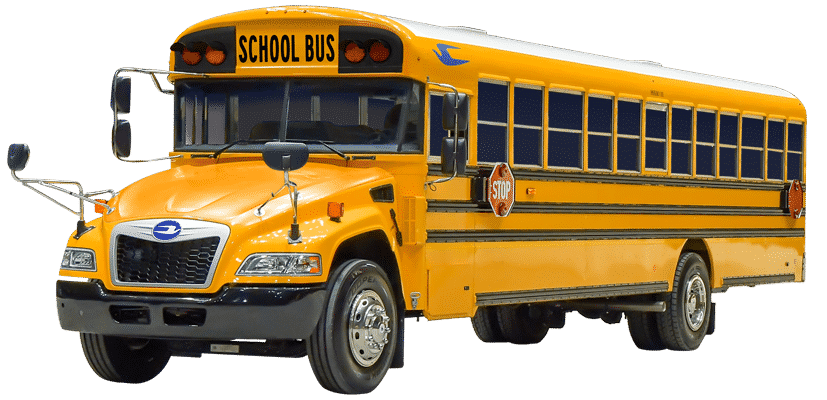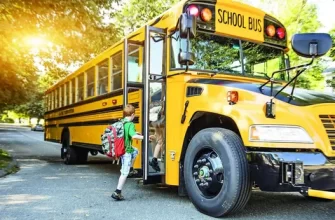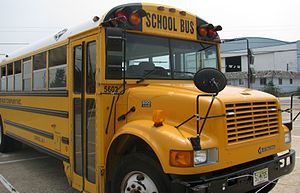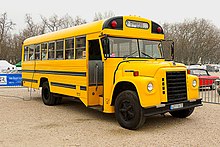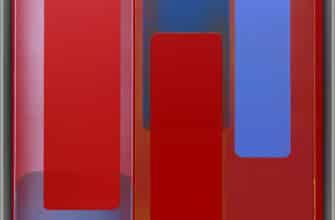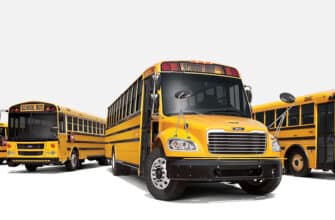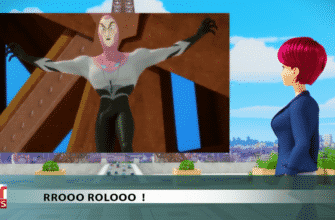Blue Bird Body Company
1927–1945: Foundation and All-Steel School Buses
Blue Bird Body Company was founded in 1932 by Albert L. Luce, Sr. Originally the owner of a Ford dealership, Luce built his first bus in 1927. The Blue Bird name originated from the reception of school children to a blue and yellow demonstrator unit to a group of school children; Luce did not use the family name for his business out of fears of it being mispronounced. In 1937, the company began production of all-steel bus bodies, an innovation which soon replaced the wooden bodies which were then in common use around the United States. The early use of farm wagons on a part-time basis soon evolved into purpose-built school bus products, each with economy and function as major priorities.
As the second quarter of the 20th century began, Albert Luce Sr. was one of the entrepreneurs of the period who transitioned from building wagons to developing some of the earliest purpose-built school buses. In a 1939 conference, Blue Bird engineers helped to develop the color school bus yellow, which is still in use today. Blue Bird and Wayne Corporation were several of the earliest to experiment with steel body construction, although such efforts were severely limited by war production product shortages and restrictions during World War II.
1945–1960: The First All American
Following World War II, continuing a transition from one-room schools, there was a nationwide movement in the US to consolidate schools into fewer and larger ones, facilitating graded class structures. This meant that fewer students were attending school in their immediate neighborhoods, particularly as they progressed into high school; for many, the previous practice of walking to school became impractical. This led in turn to a large increase in the demand for transportation.
The company grew substantially and became a major school bus body builder in the post-World War II period. In 1948, Blue Bird founder Albert Luce Sr. saw a design for a flat front bus at an auto show in Paris. Two years later Blue Bird Body Company introduced their own transit-style design which evolved into the Blue Bird All American, often pointed to as one of the pioneer transit designs to gain widespread acceptance for school buses in North America, along with Wayne Corporation, Gillig Corporation and Crown Coach Corporation (whose “Supercoach” dated to 1932). In 1952, Blue Bird became the first school bus manufacturer to produce its own chassis rather than rely on outside suppliers for the All American; today, Blue Bird builds the chassis for every full-size bus produced.
1960–1990: Expansion into new markets
Blue Bird became an international manufacturer of school buses with the opening of Blue Bird Canada in Brantford, Ontario in 1958. In 1965, the company opened its first facility in Latin America. In Guatemala, Blue Bird manufactured the bodies for the Conventional and the All American for use both as school and transit buses. Instead of importing truck chassis (or the Blue Bird All American transit-style chassis) from the United States, the bus bodies were manufactured on locally available chassis unseen in North America (Mercedes-Benz, Hino, Nissan Diesel, and Toyota).
At the time of Albert Luce, Sr.’s death in 1962, Blue Bird Body Company had become the fourth-largest school bus manufacturer in the industry. By 1980, Blue Bird was one of the “Big Six” school bus body manufacturers in the United States, competing with Carpenter Body Works, Superior Coach Company, Thomas Built Buses, Inc., Ward Body Works, and Wayne Corporation. By this time, almost the entire Baby Boom generation had completed their high-school education; along with the move to from cities to suburbs, the higher student populations of the previous two decades had been a key factor behind school bus sales. The recession of the early 1980s cut deeply into profits, leading to the re-organization or closure of several manufacturers. Blue Bird fared better than most manufacturers, becoming the largest manufacturer in terms of sales; by the mid-1980s, one out of every three new school buses was a Blue Bird
1990–2006: Ownership changes
From its 1932 foundation until 1984, Blue Bird was run entirely by the Luce family, either by Albert Sr or by his three sons. In 1986, the board of directors hired Paul Glaske, president of Marathon LeTourneau, a Texas-based heavy equipment manufacturer. During this time, the Luce family still maintained ownership of the company. In 1992, Merrill Lynch Capital Partners purchased an 82% stake of the company in a management-led buyout with the other 18% spread between Paul Glaske and 14 other Blue Bird managers. After the buyout, the company name changed from Blue Bird Body Company to Blue Bird Corporation.
Sagging demand, financial difficulties and changing world markets in the 1990s and early 2000s lead to Blue Bird closing two plants and opening another. Blue Bird East was shut down in 1992; Blue Bird de Mexico in Monterrey, Nuevo León, Mexico, was opened in 1995.
Blue Bird was owned by the British Henlys Group PLC with a substantial financial stake held by Volvo Group from 1999 to 2004. Henlys had financial difficulties during this time, including some not related to its investment in Blue Bird. Blue Bird de Mexico in Monterrey, Mexico was closed in 2001. Blue Bird Midwest was closed in 2002.
However, after a bankruptcy filing, Blue Bird was acquired by Cerberus Capital Management. In connection with the acquisition by Cerberus of North American Bus Industries and Optima Bus Corporation, Blue Bird’s acquisition led to Cerberus having a complete line of school and transit buses. Blue Bird is currently owned by the Traxis Group B.V., who acquired them in 2006.
Product Changes
The late 1980s and 1990s saw the Blue Bird product lineup in flux in comparison to the decades before. In 1988, Blue Bird introduced the TC/2000, its first all-new transit-style school bus in over 25 years; the flagship All American was redesigned a year later. In 1991, the Blue Bird Wanderlodge ended the use of its school bus body. The 1992 Q-Bus was the first Blue Bird transit bus designed from the ground up as a transit bus and not derived from the All American.
The 1990s were also a period that the company explored the use of alternative power sources for school buses. In 1991, Blue Bird introduced the first school bus (an All American Rear Engine) powered by compressed natural gas (CNG). In 1994, Blue Bird developed a battery-powered school bus in an effort with Westinghouse Electronic Systems for a school district in California. While the electric school bus remained a prototype, Blue Bird has continued to offer CNG as an option on the All American since its 1991 introduction.
2007–present: Renewed Focus On School Buses
Blue Bird No. 1, the first steel-body Blue Bird school bus, was donated to The Henry Ford Museum in 2008.
In October 2009, Blue Bird entered into a joint venture with Canadian school bus manufacturer Girardin Minibus. The partnership, named Micro Bird, Inc. ended production of the Micro Bird model to consolidate all Type A school bus production at the Girardin facilities in Quebec, Canada. All future Type A school buses will be branded Blue Bird Micro Bird by Girardin while Blue Bird itself focuses on Type C and D buses. The 2010 Micro Bird was the last Blue Bird body built on a non-Blue Bird chassis.
Manufacturing and assembly
Traditionally, school buses such as those produced by Blue Bird consist of components purchased from various “outside” suppliers and parts which are manufactured “in house” to the company’s specifications. These two categories of parts are then typically assembled into bodies which can be mounted onto chassis which have often been variations of those used in a myriad of truck applications.
Production-wise, the large “home” plant complex in Fort Valley, Georgia served as both an in house part manufacturing plant for the entire organization, as well as one of the six locations where bodies were assembled from in house and purchased components. Parts and service were also located in Fort Valley, as was Wanderlodge Wayside Park, a tree-shaded motor home park for visiting Wanderlodges adjacent to the Wanderlodge plant.
(Thanks to Wikipedia for allowing the use of company history)

2009 Vision.
1995 TC2000.
2000 All American FE .

Boardman Ohio, has this 2003 TC2000.

Alabama 2001 All American RE.

1999 TC2000.

2013 All American FE.

1989 Conventional 66 passenger buses on International chassis.

99 FS65 Freightliner chassis conventional…Sometimes called a “Freightybird”

Tippecanoe 2nd gen Vision with luggage bays.

1997 TC2000RE.

2013 Vision…Loaded with options.

1965 GMC Bluebird conventional.

1998 CV2000 on Chevrolet chassis.

Monark Transpotation (PA) All American FE.

2000 Conventional from Webster, NY.

1980 All American FE from Austintown, OH.

1960 Conventional on Chevrolet chassis.

Bluebird EC72…The Victory project. There were 25 made at this point.
More to Come!

